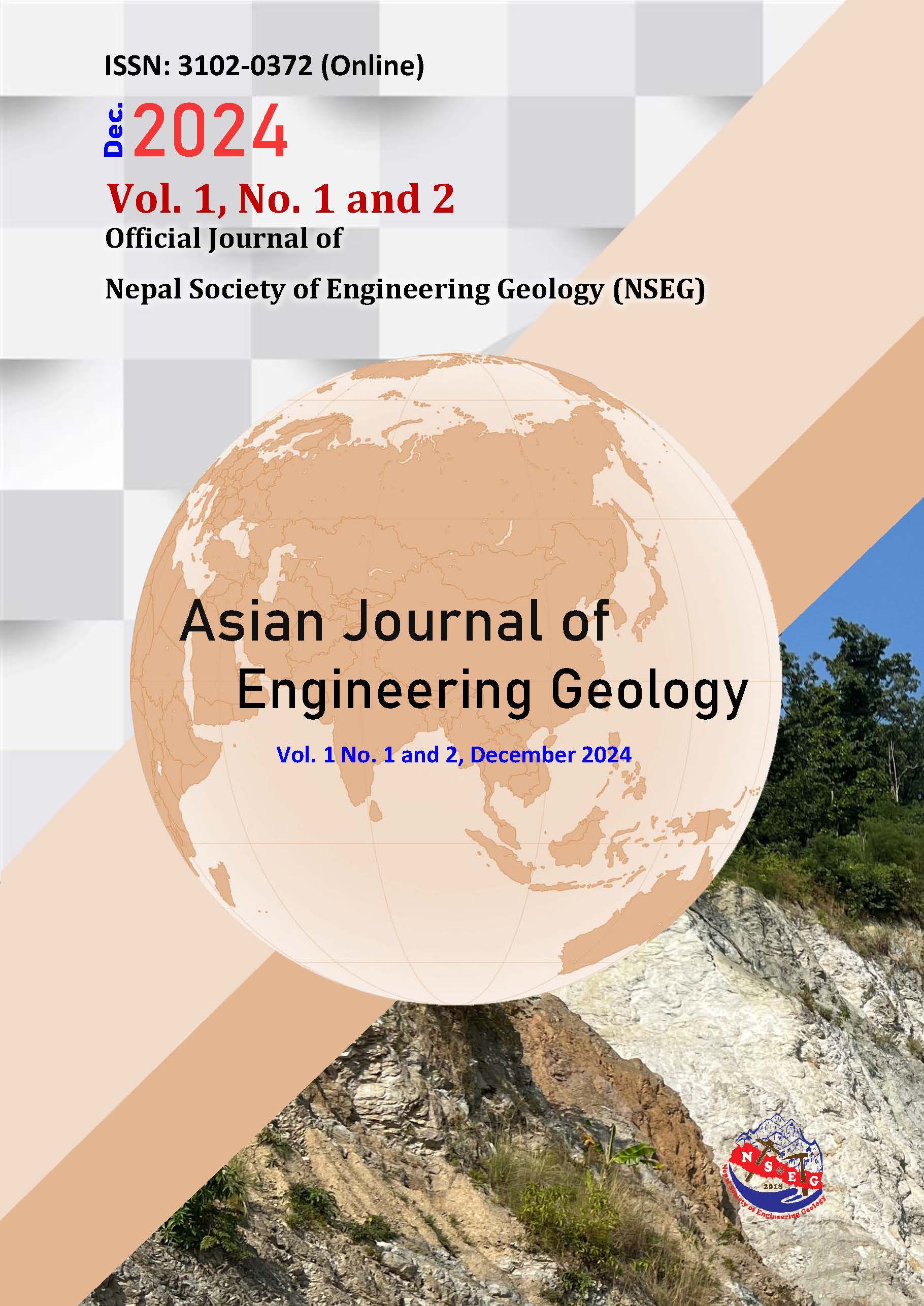Rockfall Analysis for the Construction of Flexible Rockfall Barrier System at Upper Tamakoshi Hydroelectric Project
Keywords:
Rockfall, CRSP, GeoRock-2D, Rockfall barrierAbstract
Rockfalls pose a significant hazard in Nepal due to its steep terrain, fragile geology, and frequent seismic activity, with risks further heightened during the monsoon season. The Upper Tamakoshi Hydroelectric Project (UTKHEP), Nepal’s largest hydroelectric project, has faced persistent rockfall issues at its take-off yard since the early construction phase. This study investigates the design and implementation of a rockfall protection barrier to safeguard the project’s infrastructure. A comprehensive field survey, including drone imaging and rock boulder analysis, was conducted to assess potential rockfall sources and deposition zones. The CRSP computation method was employed for rockfall simulation using GeoRock-2D software, with parameters such as boulder size, slope material, and surface characteristics. Simulation results identified optimal locations for barrier placement based on maximum energy and bounce height of falling rocks. The study highlights the importance of rockfall mitigation for infrastructure protection in Nepal’s mountainous regions.
References
Pfeiffer T.J., Bowen T.D., Computer Simulation of Rockfalls. Environmental and Engineering Geoscience 1989; xxvi (1): 135–146.
Giani G.P. (1992): Rock slope stability analysis. Balkema, Rotterdam. 361p.
Downloads
Published
Issue
Section
License
Copyright (c) 2024 Nepal Society of Engineering Geology (NSEG)

This work is licensed under a Creative Commons Attribution 4.0 International License.




